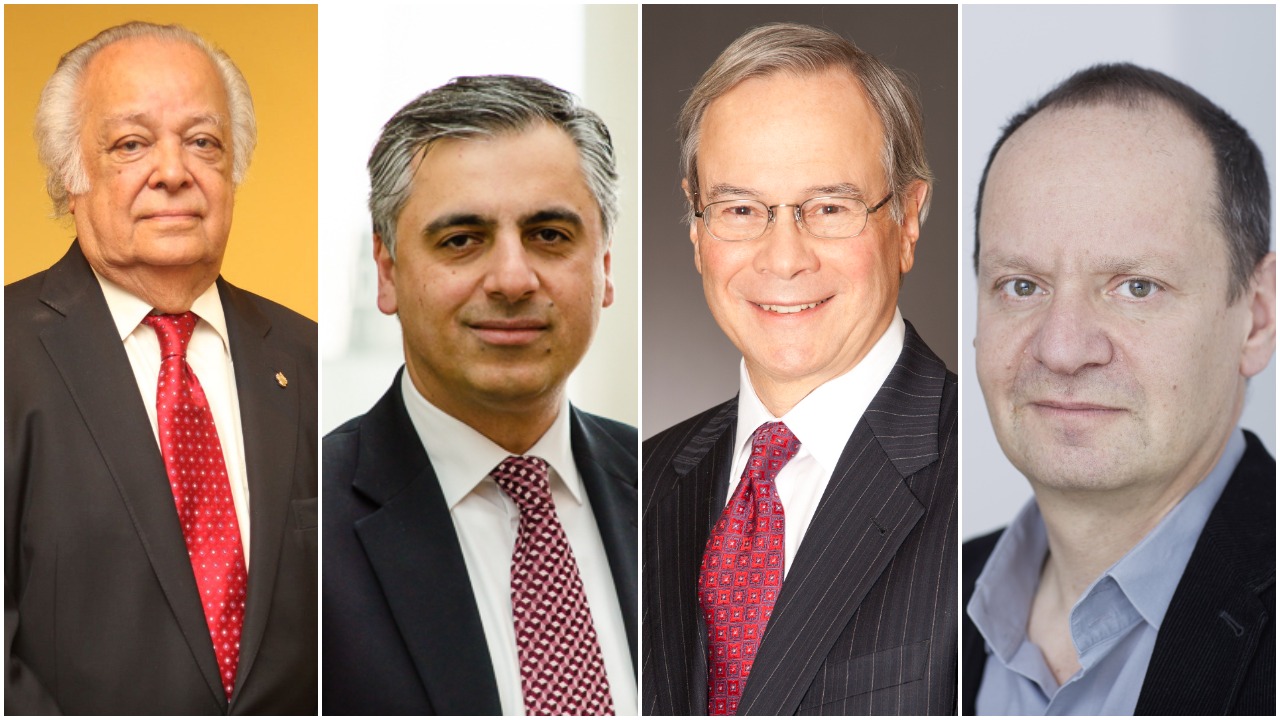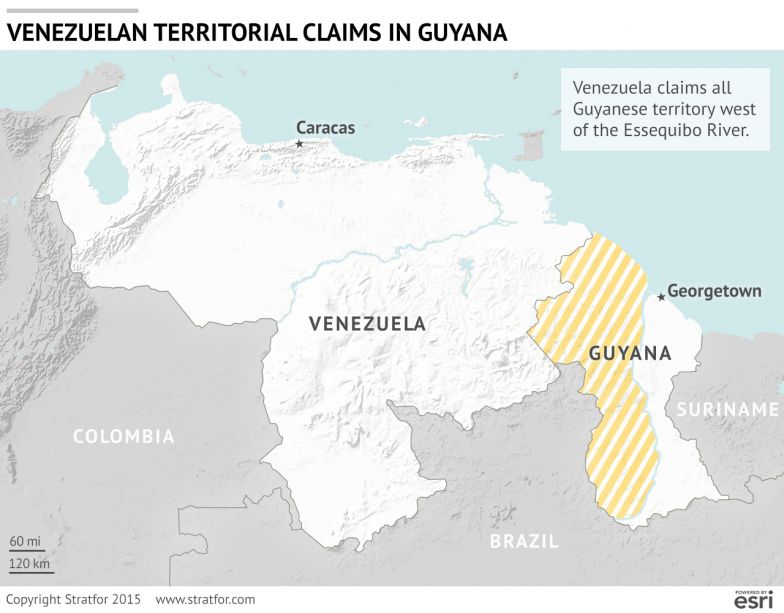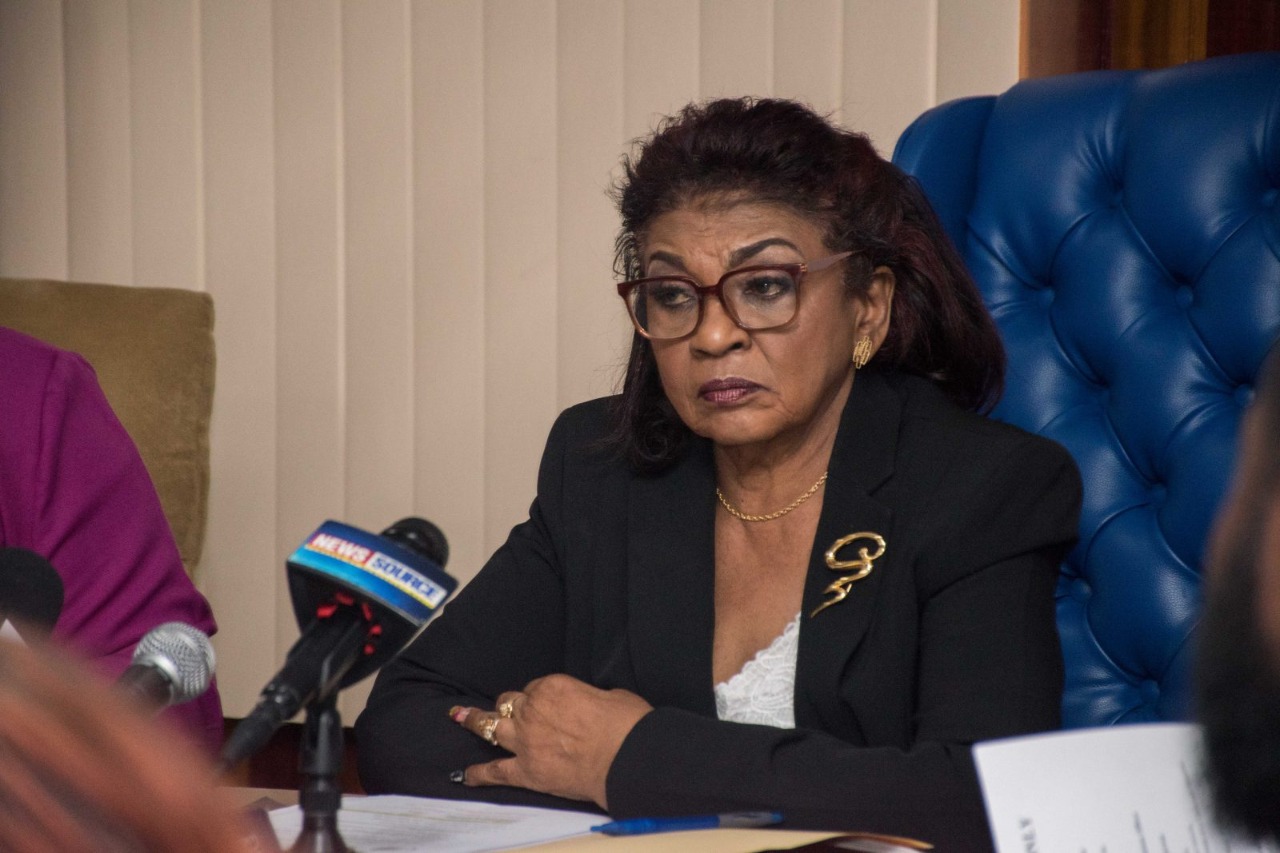
With Venezuela maintaining a claim to 70% of Guyana’s territory over its argument that the arbitral award which over 120-years-ago determined the boundaries between the two countries is null and void, a high-level legal team representing Guyana Tuesday made out a case on why the International Court of Justice (ICJ) has the powers to hear and determine the case brought before it to put an end to the controversy.
After the last push to see if talks could bear fruit between the two countries failed, the United Nations Secretary Antonio Guterres on January 30, 2018, announced that he was referring the matter to the International Court for final and full settlement.
But Venezuela contends that the Secretary-General was not correct in taking the decision, saying that it wanted talks to continue. But Guyana, exhausted by decades of talks that produced no results, moved to the Court to settle the controversy.
Venezuela has argued that the court has no jurisdiction and did not participate in the oral hearings Tuesday. The hearing was the first the court was having online since it was closed due to the COVID-19 pandemic.
Sir Shridath Ramphal – Guyana’s first Attorney General – who led Guyana’s arguments Tuesday, said the court was not left to speculate as to what Venezuela might have said had it appeared before the court.
On November 28, 2019, Venezuela submitted a 56-page memorandum to the court, accompanied by a 155-page annex setting out the basis for its objections to the court’s jurisdiction.
Sir Shridath, in a passionate opening statement to the Court, said Guyana’s collective patrimony is at the very center of the case and said Guyanese are united in the defence of the sovereignty and territorial integrity of their homeland.
Guyana’s official and representative delegation, which joined in from the Ministry of Foreign Affairs in Guyana were: Guyana’s agent and co-agent, Foreign Secretary Carl Greenidge and Ambassador Audrey Waddell; opposition representative Gail Teixeira; former Foreign Minister Rashleigh Jackson, and Ambassadors Elizabeth Harper and Cedric Joseph.

Sir Shridath Ramphal noted why the case has reached the International Court of Justice even though the boundaries between the two countries were definitively settled in an arbitral award in Paris on October 3, 1899.
“We are here because contrary to international law and to the binding award of 1899 the Bolivarian Republic of Venezuela, our neighbour the west, has cultivated a nationalist passion to disavow that day in Paris and lay claim to almost three-quarters of Guyana,” Sir Shridath stated.
The attorneys for Guyana pointed out that an agreement signed between the parties in Geneva in 1966 provides for the methods under which the controversy could be settled and made provision for United Nations Secretary-General to decide on the means to bring the controversy to an end.
Venezuela contended that there was no basis to even establish even in prima facie to consider Guyana’s move to the court.
Sir Shridath noted that the move to the International Court of Justice is rooted in Venezuela’s repudiation of the award six decades after it was handed down at a time that seemed propitious to it – the eve of Guyana’s independence.
Sir Shirdath argued that the 1899 award was the very fulfilment of Venezuela’s early wish that the border should not be left to negotiation by the imperialist power but should be determined by international arbitration. In this, Venezuela was supported by the United States; Washington threatened to go to war with Britain if the matter was not settled.
Britain eventually agreed and signed the so-called Treaty of Washington in 1897. Venezuela would have the arbitration it demanded.
That Treaty of Washington, Sir Shridath noted, left nothing to chance.
“The parties agreed specifically to consider the result of the arbitration as ‘a full, perfect, and final settlement’ of all the questions referred to the arbitrators.”
Both Britain and Venezuela upheld the agreement – until 1962 when the Government of Venezuela formally denounced the arbitral award of 1899 for the first time and reasserted the original pre-award claim which amounted to 70% of Guyana’s territory.
From the time that contention was first made, it was vigorously rejected, Sir Shridath noted.
Between 1962 and 1965, the parties engaged one another in a series of talks in which each tried to convince each other of the correctness of their position with no progress towards a resolution.
These talks set the stage for a final round of meetings in Geneva in February 1966.
On the eve of independence, Guyana participated in that conference and Sir Shridath did so personally, as the country’s Attorney General.
Article IV (2) of that agreement provided that where other means to resolve Venezuela’s claim fails, the Secretary-General of the United Nations shall choose another of the means of Article 33 of the Charter of the UN.
In Geneva, it was Venezuela that affirmed that procedure, Sir Shridath noted.
And so, he told the Court that the hearing is really about the Court’s jurisdiction to consider claims in Guyana’s application that the arbitral award continues to be valid and binding.
He said Guyana’s case is based on the plain text of the 1966 agreement by which the parties expressly consented to accept the decision of the UN Secretary-General on the means of settling the controversy over the validity of the 1899 arbitral award and that the matter shall be settled by the Court as the means chosen by the UN Secretary-General.
Professor Payam Akhavan, a member of Guyana’s legal team, pointed out that the objective and purpose of the Geneva agreement was to obtain a final and binding resolution to Venezuela’s claim.
Providing a background of how the arbitral award was granted in 1899, he noted that Guyana once comprised the Dutch settlements of Berbice, Demerara and Essequibo, these having been established in the early 17th century. These settlements were recognised by Spain in a 1648 treaty.
In 1814, the Netherlands ceded these territories to Britain and in 1831 they were consolidated into the colony of British Guyana.
Upon Venezuelan’s independence in 1810, the boundary had not yet been determined and by 1840 with the discovery of gold in the upper Cuyuni River, Venezuela had proposed the conclusion of a treaty claiming the Essequibo River as its boundary with then British Guiana.
Britain’s claim extended to the prized mouth of the Orinoco River.
By 1895, the boundary dispute had escalated into a diplomatic crisis between Britain and the United States as the United States, through the so-called Munroe doctrine, strongly opposed British expansion in the Americas.
By 1897, under threat of war with the United States, Britain agreed to arbitration to resolve the boundary dispute.
Professor Akhavan noted the words of one historian that it was one of the most momentous episodes in the history of Anglo-American relations in general, and of Anglo-American rivalries in Latin American in particular.
He said this was one notable instance of peaceful dispute settlement in a period when recourse to war was a continuation of politics by other means.
That led to the Washington Treaty between the British and Venezuela on February 2, 1987.
Article 8 of the Treaty stipulated that “The high contracting parties engage to consider the result of the proceedings of the Tribunal of Arbitration as a full, perfect and final settlement of all the questions referred to the Arbitrators.”
The tribunal comprised the British Chief Justice and another British judge, the Chief Justice of the United States and another Justice of the United States Supreme Court. The other judge, who served as the President of the Tribunal was the Russian Fyodor Martens.
The tribunal held 54 meetings and considered documents covering 300 years of Spanish, Dutch and British rule in the disputed territories.
On October 3, after extensive deliberations, the members of the tribunal gave their unanimous decision.
The Venezuelans hailed the decision, saying they were given the exclusive dominion of the Orinoco, one of their principal aims of wanting the boundary demarcated.
In 1900, the British and Venezuela established a joint commission to carry out the physical demarcation of the boundary.
In 1905, Professor Akhavan noted, after years of arduous work, the boundary was demarcated with pillars and geographic features stretching 825 kilometres from the Caribbean Coast to the trijunction point with Brazil in the Amazon basin.
The commission produced an official boundary map with the clear specification of the boundary line with the arbitral award of Paris.
“The 1905 map was exceptionally accurate; it followed 15, 440 points from the monument at Punta Playa in the north to the top of Roraima in the south.
“Those points are confirmed by modern satellite imagery,” Professor Akhavan noted.
In the years that followed, he said the award was fully respected.
In 1932, a tripartite agreement confirmed the point of convergence of the boundaries of Venezuela, British Guiana and Brazil and this was sealed by the exchange of notes by the three territories.
In 1944, Venezuela reconfirmed the boundary and accepted the verdict of the arbitration.
And so, from the time the arbitration award was handed down, it stood uncontested for 60 years.
In 1962, in the de-colonisation period towards independence, Venezuela suddenly repudiated the award.
On December 18, 1961, Premier of British Guiana, Dr Cheddi Jagan petitioned the United Nations General Assembly body to bring about the immediate political independence of his country and on January 15, 1962, the United Nations said it was willing to hold the constitutional conference on the independence of British Guiana.
At that time, Venezuela demanded a revision of the award and wanted to recover what it said was its territory.
This arose out of Venezuela’s contention that British Guiana was becoming a Cuba on the South America continent, and planned to persuade Britain to cede.
Venezuela further claimed it could not recognise the arbitral award, viewing it as an Anglo-American political transaction conducted behind its back through collusion between the Russian President of the tribunal and the two British arbitrators.
The UK offered to discuss the matter with Venezuela through diplomatic arrangements but there was no shred of evidence produced by Venezuela to support its claim.
By 1965, Venezuelan began to produce maps, marking of the territory of British Guiana it sought to “reclaim.”
By the Geneva Agreement of February 17, 1966, Guyana and Venezuela allowed for the UN Secretary-General to determine a resolution to the controversy.
In October 1966, Venezuelan armed forces invaded Guyana’s half of Ankoko Island and installed a military base and to this day Ankoko remains occupied.
Paul Reichler, another member of Guyana’s legal team, told the Court that for Venezuela to now suggest that the move to the Court was conditioned on the agreement of all parties is to put the Geneva Agreement on its head.
He said the parties, Venezuela included, empowered the Secretary-General, agreeing that his decision would be binding, and he was to continue to exercise his power until a resolution was achieved.
As such, he said Venezuela’s current agreement is at odds with its original position and he said it was interesting that Venezuela has not presented any of contemporaneous arguments in its submission to the International Court of Justice.
Reicher dismissed the first argument by the Venezuelan President regarding the Geneva agreement. Nicholas Maduro, in a June 18, 2018 letter to the court, noted that a resolution should only be sought through friendly negotiations.
But he said Maduro stopped reading the agreement after Article III; that, he said, is like reading the book of Genesis and getting only to the fifth day of creation and forgetting everything else.
He said Article IV of the agreement sets out the role of the Secretary-General in determining the mechanism to bring a final resolution to the controversy.
Phillepe Sands, another attorney for Guyana, noted that all the conditions established by the Geneva agreement have been properly implemented.
After more than 25 years of trying to resolve the controversy through talks the Secretary-General made his decision to refer the matter to the International Court of Justice and that decision, Sands said, is unimpeachable, lawful and has full effect.
He said the Secretary General‘s decision was appropriate and inevitable to put an end to the long-standing and destabilising controversy.












